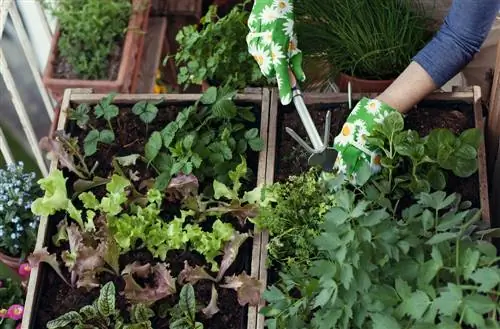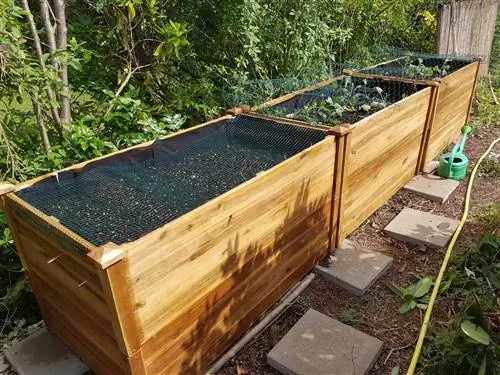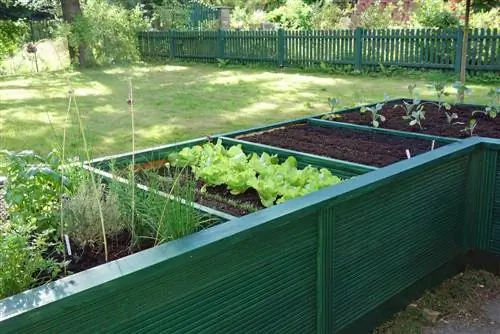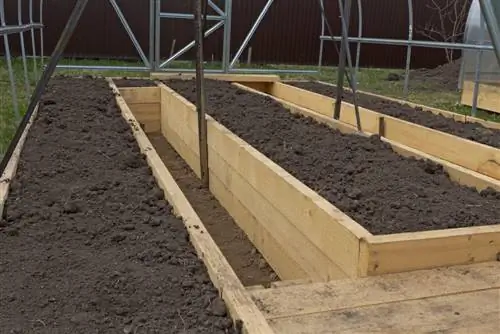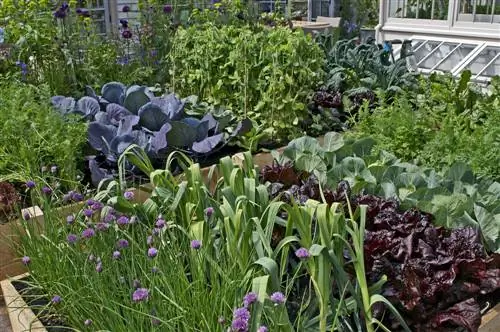- Author admin [email protected].
- Public 2023-12-16 16:46.
- Last modified 2025-01-23 11:21.
In principle, the same work needs to be done in a raised bed as in a conventional ground bed. Here, too, your plants need careful care so that they grow splendidly and a rich harvest is possible from spring until the first frost.
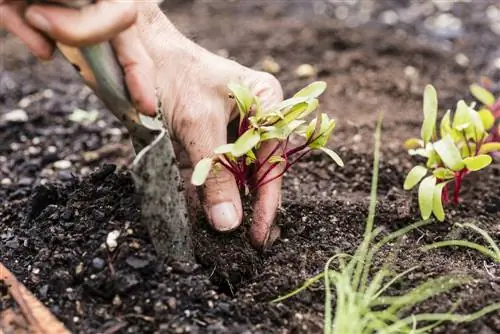
What do you need to garden in a raised bed and what can you grow?
When gardening in raised beds, hand tools such as hand shovels, flower forks, hand rakes, hand rakes and gardening knives are particularly useful. Gardening can be done all year round by planting different vegetables and herbs in spring, summer, autumn and winter.
Basic equipment for gardening in raised beds
If you garden primarily in raised beds, you need different basic equipment. Long-shafted devices such as spades etc. are of little use here; instead, small hand-held devices are usually sufficient.
These tools are practical
It makes sense to purchase these handheld devices:
- Use a hand shovel and flower fork to make seed grooves and dig planting holes.
- Use a hand rake to loosen the substrate between the plants.
- The substrate can be pulled smooth with a hand rake (€32.00 on Amazon).
- You need a gardener's knife (also called a hippe) with a curved blade for harvesting and removing diseased/dead parts of plants.
- If you are cultivating shrubs or trees, you will need pruning shears.
- A watering can/hose is required for watering.
- Gloves made of fabric or leather as well as latex protect against injuries and dirt.
Useful accessories
In addition to the basic equipment mentioned, the following utensils are useful: binding cord, wire, weed fleece, transparent cover film, various support rods made of wood or bamboo and weatherproof labels for writing. A bucket or mesh basket is useful for collecting and transporting plant residues, crops and small tools.
Work to be done in the raised bed
If the ground in the normal vegetable garden is still frozen, you can start the gardening season in the raised bed around February. Especially in layered beds, despite the winter cold, it is still warm enough to grow vegetables. With the help of a foil cover, gardening is possible almost all year round.
Gardening in Spring
From March / April you can sow the following vegetables in raised beds: radishes, radishes, spinach, chard, cut and picked lettuces, carrots, parsnips and root parsley. Furthermore, herbs such as parsley, garden cress, chervil and salad herbs such as rocket and Asian salads (e.g. Mizuna) are relatively insensitive to cold. After watering, cover the seeds with white fleece (not foil!) so that the seedlings are protected from the cold.
Gardening in summer
Heat-loving vegetables such as peppers, chili and tomatoes only come into the bed after the ice saints. Plant early cucumbers, zucchini, eggplants and pumpkins at the earliest at the end of May, preferably at the beginning of June. From June onwards you can also plant kohlrabi, broccoli and summer salads such as romaine and bulbous fennel. You should harvest spinach now, otherwise it will start to sprout.
Gardening in the fall
From August onwards, autumn vegetables such as late varieties of broccoli, kale and Chinese cabbage, radicchio and endive come into the bed. You can now sow or plant spinach again. From September you should also keep a frost protection fleece handy because the nights can get colder again.
Gardening in winter
Even in winter, the raised bed doesn't have to lie fallow: cold and frost, for example, don't affect leeks, broccoli sprouts, parsnips, rocket, parsley and celery. Cover the bed with a white fleece and harvest it by February so that you can start the new season straight away.
Tip
With a classic layered raised bed, fertilizing is basically not necessary during the first three years.
Additional information on ergonomic gardening is compiled for you in this article.


